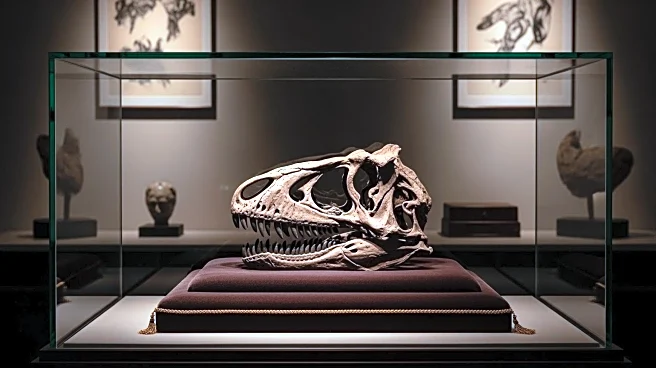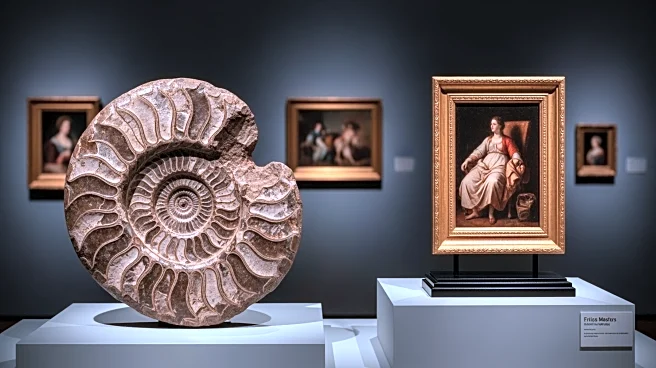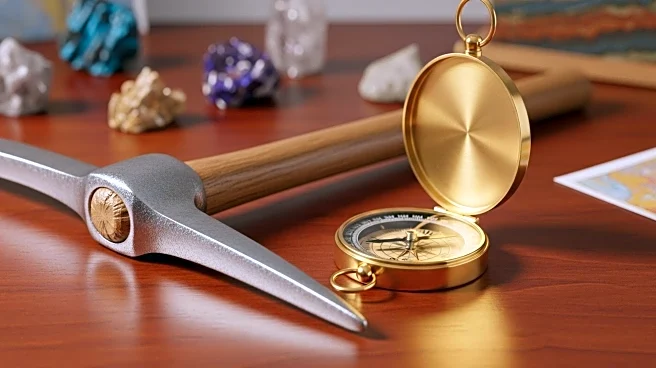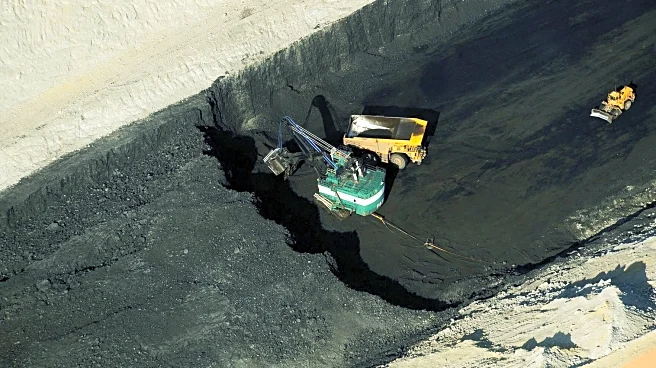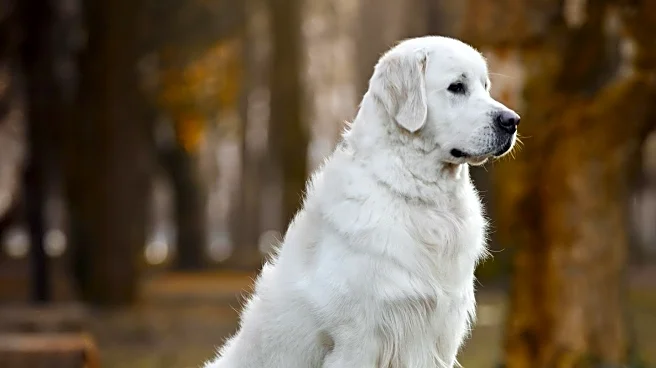What's Happening?
A 68-million-year-old Triceratops skull was sold on the opening day of Frieze Masters London. The skull, discovered in Montana in 2019, was priced at £650,000 and sold by David Aaron to a private collector.
Salomon Aaron, a director at David Aaron, highlighted the iconic nature of dinosaur fossils and their undervaluation compared to other art categories. The fair also featured sales of various artworks, including small drawings by Alexandre-Louis Leloir and paintings by Janice Biala and Anne Rothenstein, with prices ranging from £150 to €7.5 million.
Why It's Important?
The sale of the Triceratops skull underscores the growing interest and value of dinosaur fossils in the art market. This trend reflects a broader appreciation for historical and scientific artifacts as collectible items. The transaction also highlights the intersection of art and science, where fossils are not only seen as scientific specimens but also as cultural and artistic treasures. This could influence future art fairs and auctions, encouraging the inclusion of more scientific artifacts in the art market.
What's Next?
The successful sale of the Triceratops skull may prompt other collectors and museums to consider acquiring similar fossils, potentially increasing their presence in art fairs. This could lead to a reevaluation of the market value of such items, influencing pricing strategies and auction dynamics. Additionally, the interest in fossils might inspire collaborations between scientists and artists, exploring new ways to present and interpret these ancient relics.
Beyond the Headlines
The sale raises ethical questions about the commercialization of scientific artifacts and their accessibility to the public. While private collectors can preserve these items, their acquisition may limit public access and educational opportunities. This development could spark discussions on the balance between private ownership and public exhibition of significant historical artifacts.
